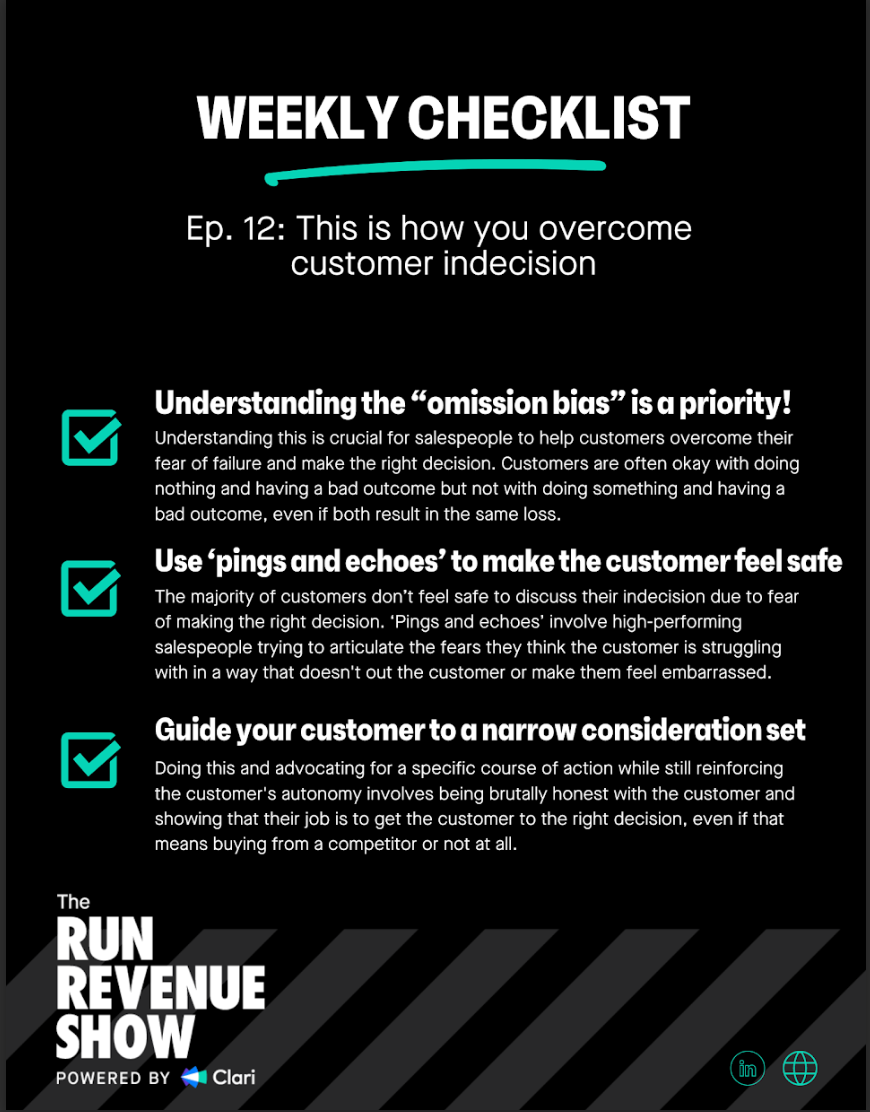You’ve got a prospect on the hook. You’ve had conversations with multiple stakeholders. You’ve followed up time and time again and given them all of the information they need to make the decision that’s best for them. But, your Spidey-senses are tingling: there’s some fear there, and you don’t know why. The likely scenario: They have been consumed with the enemy of indecision. Let’s face it. Sometimes it’s just hard to get a customer to close for a number of reasons, but the leading factor is fear. So what’s the trick to helping your hesitant customers overcome their fear so you can close that deal you’ve been waiting for? Matt Dixon is the co-author of The Challenger Sale, The Challenger Customer and The Effortless Experience and is also the founding partner of DCM Insights.
In this episode of the Run Revenue Show, Matt shares the challenges that salespeople face when customers express hesitation and objections during the sales process, he explores the concept of the omission bias and shares insights from large-scale studies on sales effectiveness, and, he provides practical advice on how to overcome indecision, and more. Here’s what’s inside: Understand the “omission bias”: Customers are often okay with doing nothing and having a bad outcome but not with doing something and having a bad outcome, even if both result in the same loss. Use ‘pings and echoes’ to make the customer feel safe: The majority of customers don’t feel safe to discuss their indecision due to fear of embarrassment or failure to make the right decision. ‘Pings and echoes’ involve high-performing salespeople trying to articulate the fears they think the customer is struggling with in a way that doesn't out the customer or make them feel embarrassed. Guide your customer to a narrower consideration set: Doing this and advocating for a specific course of action while still reinforcing the customer's autonomy involves being brutally honest with the customer and showing that their job is to get the customer to the right decision, even if that means buying from a competitor or not at all. Grab this week’s checklist:

